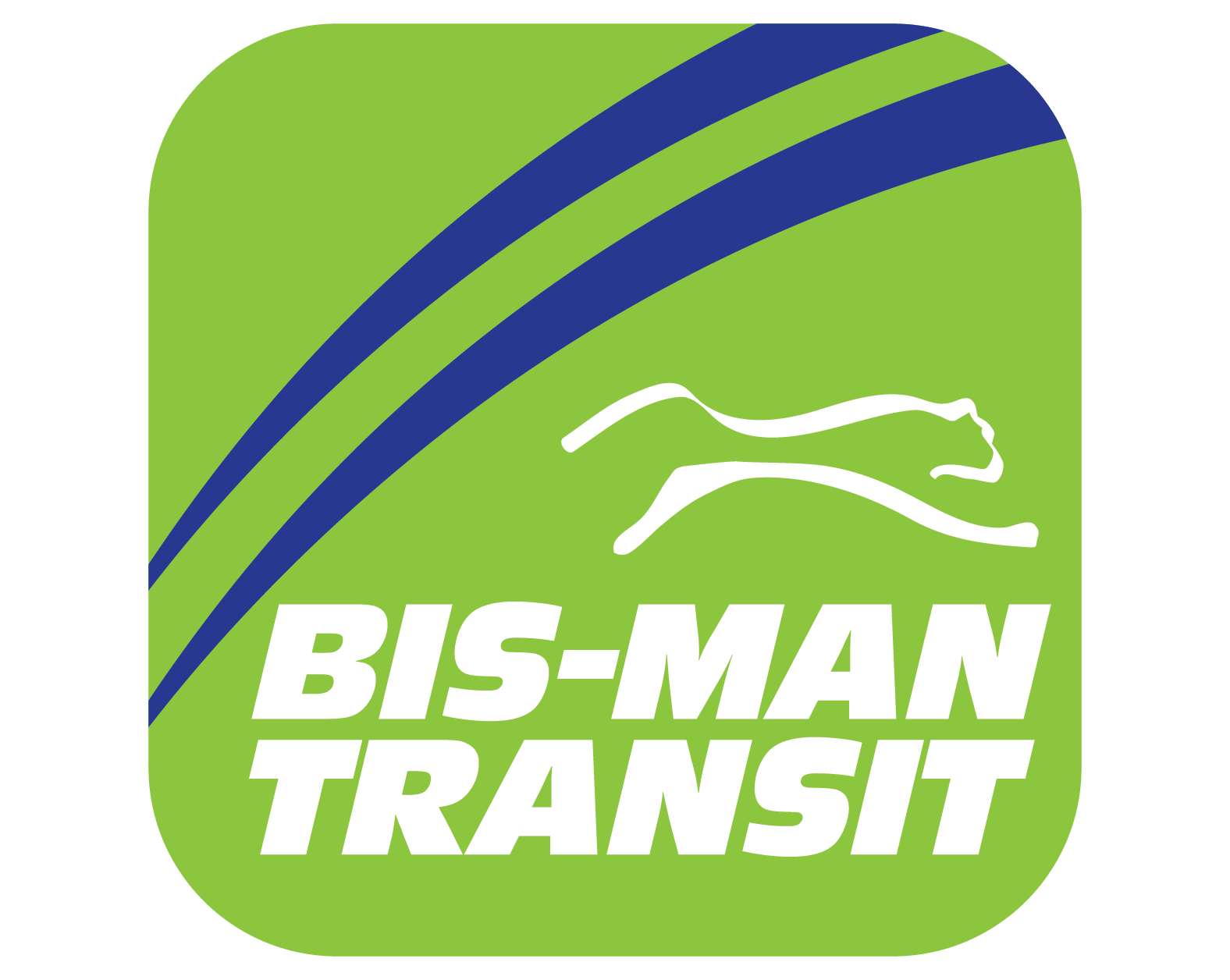Follow Us x
Our Mission:
Bis-Man Transit delivers valued public transportation, linking people, jobs and communities.
Our Vision:
Our vision is to provide safe, reliable, and efficient public transportation to support the overall quality of life in our communities.
Our Mission:
Bis-Man Transit delivers valued public transportation, linking people, jobs and communities.
Our Vision:
Our vision is to provide safe, reliable, and efficient public transportation to support the overall quality of life in our communities.
Benefits of Using Public Transportation
A total of 7,100 organizations provided public transportation in the United States in 2011, ranging from large multi-modal systems to single-vehicle special demand response service providers. More than 800 transit organizations in 500 urban area systems provided bus transport for their customers.
- Transit systems provided service for more than 10 billion unlinked trips in 2011.
- These trips totaled over 50 billion passenger rides for the sixth consecutive year.
- Bus travel accounted for 5,234 million passenger trips (50.8 percent of all trips).
- Bus travel provided 21,415 million passenger miles (38.3 percent of all miles).
Since 1995, transit ridership has grown by nearly 3 billion trips. Public transportation’s broad reach extends to all of America’s communities, large and small, and all of Americans’ diverse lifestyles, providing freedom and mobility for citizens across the country. It also supports the country’s critical national goals and policies, including helping to conserve energy resources, thereby decreasing the dependence on foreign oil.
The rebirth of public transportation is a critically important part of America’s future, providing more capacity, creating more choices and helping address the needs of a growing and changing population.
Saves Money
A great way to save money as a household is to use public transportation; it is the quickest way to beat high gas prices. According to the American Public Transportation Association, a two-person household can save, on average, more than $10,000 a year by downsizing to one car. Public transportation not only saves you money, but it provides an affordable and necessary alternative to driving.
Saves Fuel, Reduces Congestion
Public transportation has a proven record of reducing congestion. The latest research shows that in 2011, U.S. public transportation use saved 865 million hours in travel time and 450 million gallons of fuel in 498 urban areas. Without public transportation, congestion costs in 2011 would have risen by nearly $21 billion from $121 billion to $142 billion in 498 urban areas. Public transportation use in the United States saves 4.2 billion gallons of gasoline annually. Households near public transit drive an average of 4,400 fewer miles than households with no access to public transit.
Safer than Driving
Bus related accidents have one-twentieth the passenger fatality rates of automobile travel. Car accidents are responsible for approximately 40,000 deaths (and many more injuries) per year, making them one of the largest causes of death for people aged 1-44. Traveling on public transit significantly diminishes this threat. Moreover, areas with high public transit movement tend to have better overall security and reduced crime rates.
Reduces Carbon Footprint
Public transportation in the United States reduces our nation’s carbon emission by 37 million metric tons annually. One person with a 20-mile round trip commute who switches from driving to public transit can reduce his or her daily carbon emissions by 20 pounds, or more than 4,800 pounds in a year. A single commuter switching his or her commute to public transportation can reduce a household’s carbon emissions by 10 percent and up to 30 percent if he or she eliminates a second car.
Provides Access to Essential Needs Later in Life
A survey of Americans aged 65 and older found that non-drivers take 15% fewer trips to the doctor, 59% fewer shopping trips and restaurant visits, and 65% fewer trips for social, family, and religious activities than those using an individual vehicle. Public transportation is a way for these non-drivers (particularly low-income seniors and disabled individuals) to gain access to important services and activities that improve public health such as: healthcare appointments, basic shopping, banking, education, and employment opportunities. Public transportation provides personal mobility and freedom for people from every walk of life.

